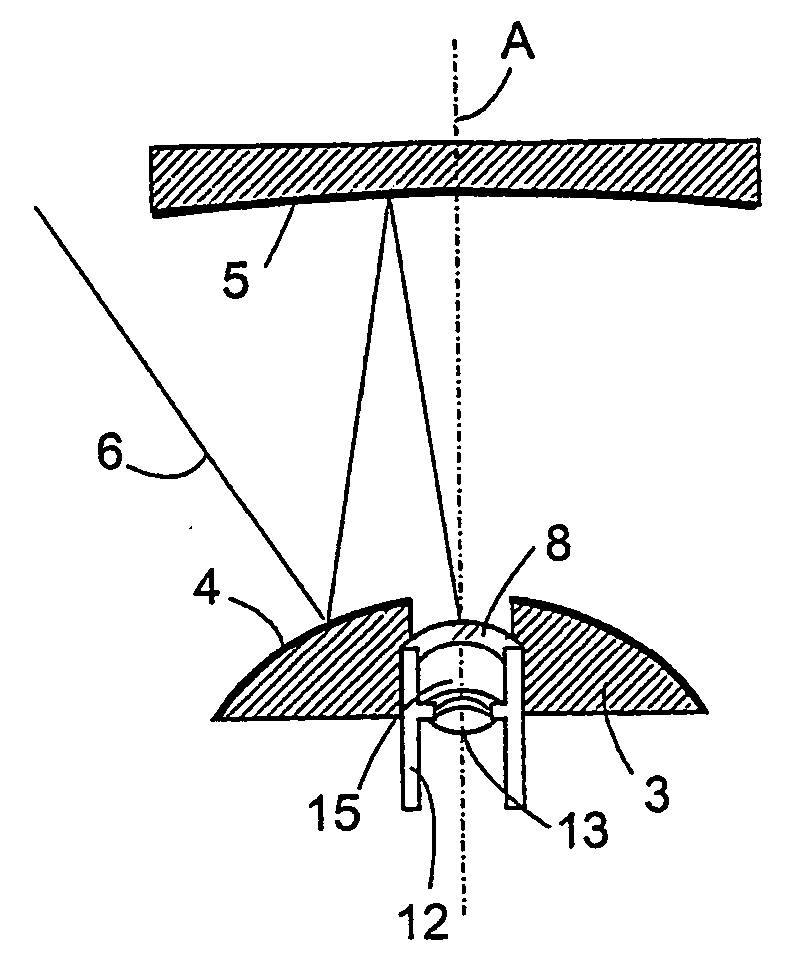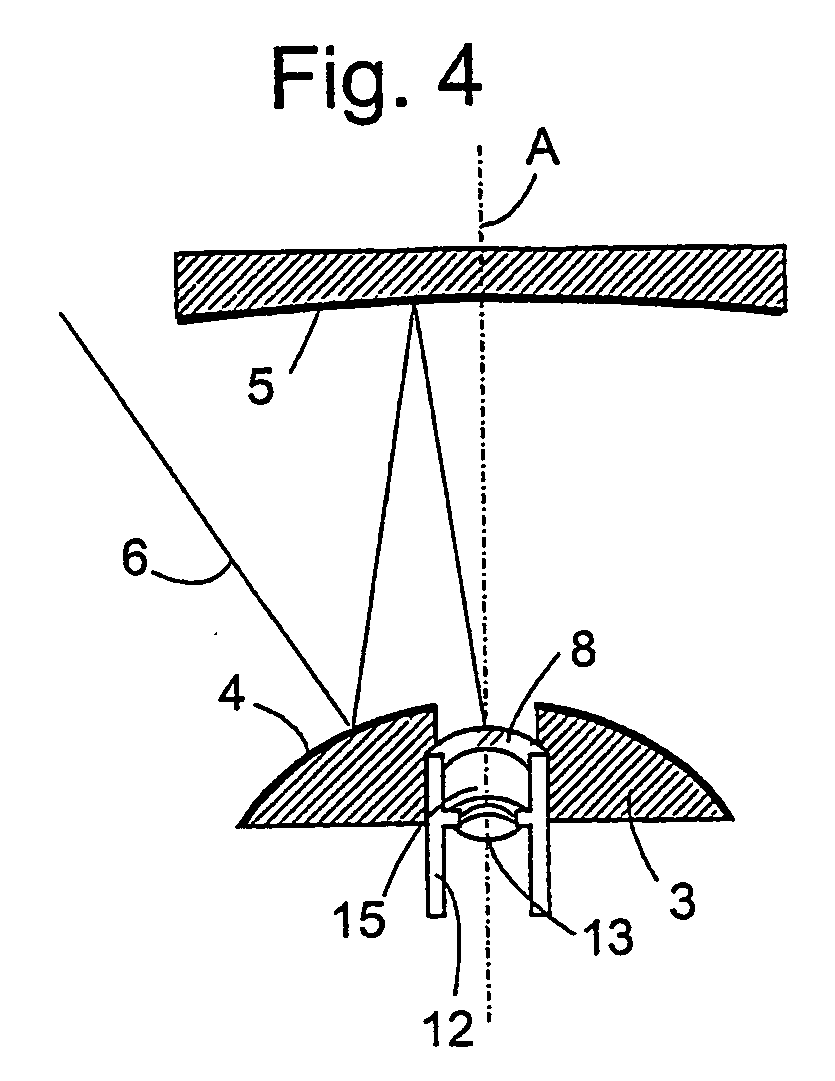Panoramic objective and panoramic camera
a panoramic camera and objective technology, applied in the field of panoramic cameras, can solve the problem of limit to the miniaturization of such a combined mirror/lens objectiv
- Summary
- Abstract
- Description
- Claims
- Application Information
AI Technical Summary
Benefits of technology
Problems solved by technology
Method used
Image
Examples
Embodiment Construction
[0019]FIG. 1 shows a diagrammatic section through a camera comprising a mirror-lens objective according to a first embodiment of the invention. The camera comprises a cup-like housing 1 with a light-sensitive element such as CCD (Charge Coupled Device) 2 arranged on the optical axis A. The housing is closed at its top by a supporting body 3 of a transparent material in optical quality. The supporting body 3 has an outside surface in the form of a convex rotational hyperboloid symmetrical about the optical axis A, on which an aluminum or silver layer is vapour-deposited in order to form a first mirror 4. At a distance above the first mirror 4, a second mirror 5 is arranged which here takes the form of a concave rotational hyperboloid. Light rays 6, which are incident on the first mirror 1 at arbitrary azimuth angles and from a wide range of zenith angles θ are reflected from the first mirror 1 to the second mirror 5 and from there into a central recess 7 of the supporting body 3 in w...
PUM
 Login to View More
Login to View More Abstract
Description
Claims
Application Information
 Login to View More
Login to View More - R&D
- Intellectual Property
- Life Sciences
- Materials
- Tech Scout
- Unparalleled Data Quality
- Higher Quality Content
- 60% Fewer Hallucinations
Browse by: Latest US Patents, China's latest patents, Technical Efficacy Thesaurus, Application Domain, Technology Topic, Popular Technical Reports.
© 2025 PatSnap. All rights reserved.Legal|Privacy policy|Modern Slavery Act Transparency Statement|Sitemap|About US| Contact US: help@patsnap.com



